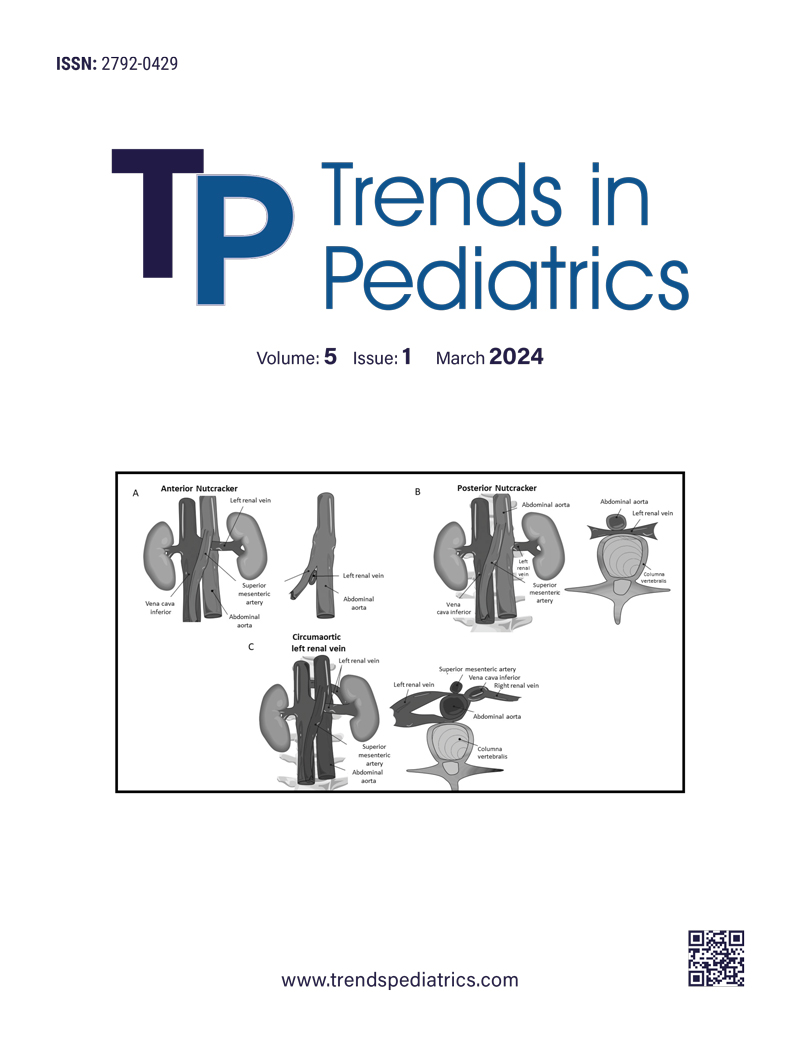Abstract
Gonadotropin-releasing hormone analogues (GnRHa) have been used safely for many years in the treatment of precocious puberty. Although rare, pain, swelling, and erythema at the injection site are known local side effects in patients receiving GnRHa treatment and are temporary. Sterile abscess development is also one of the rare local side effects. Here, we present three cases of treatment failure due to the development of sterile abscesses after GnRHa therapy.
Sterile abscesses developed in three girls who were followed up with a diagnosis of precocious/progressive puberty respectively in 4., 12. and 5. doses of GnRHa treatment. In the first case, a sterile abscess recurred despite the therapy being switched to another preparation. We had to follow up without treatment in three of our cases.
Although sterile abscess is a rare side effect, it is essential as it causes patients to be left untreated. In these cases, the drug’s active substance accumulates in the localization at the sterile abscess and cannot be absorbed, so it cannot enter the systemic circulation. Therefore, puberty cannot be suppressed. Also, a remaining scar is annoying for patients and their families.
Keywords: precocious puberty, GnRH analogues, local reactions, leuprolide acetate, triptorelin, sterile abscess
References
- De Sanctis V, Soliman AT, Di Maio S, Soliman N, Elsedfy H. Long-term effects and significant Adverse Drug Reactions (ADRs) associated with the use of Gonadotropin-Releasing Hormone analogs (GnRHa) for central precocious puberty: a brief review of literature. Acta Biomed. 2019;90:345-59. https://doi.org/10.23750/abm.v90i3.8736
- Neely EK, Hintz RL, Parker B, et al. Two-year results of treatment with depot leuprolide acetate for central precocious puberty. J Pediatr. 1992;121:634-40. https://doi.org/10.1016/s0022-3476(05)81162-x
- Tonini G, Marinoni S, Forleo V, Rustico M. Local reactions to luteinizing hormone releasing hormone analog therapy. J Pediatr. 1995;126:159-60. https://doi.org/10.1016/s0022-3476(95)70534-1
- Miller BS, Shukla AR. Sterile abscess formation in response to two separate branded long-acting gonadotropin-releasing hormone agonists. Clin Ther. 2010;32:1749-51. https://doi.org/10.1016/j.clinthera.2010.09.009
- Lee JW, Kim HJ, Choe YM, et al. Significant adverse reactions to long-acting gonadotropin-releasing hormone agonists for the treatment of central precocious puberty and early onset puberty. Ann Pediatr Endocrinol Metab. 2014;19:135-40. https://doi.org/10.6065/apem.2014.19.3.135
- Johnson SR, Nolan RC, Grant MT, et al. Sterile abscess formation associated with depot leuprorelin acetate therapy for central precocious puberty. J Paediatr Child Health. 2012;48:E136-9. https://doi.org/10.1111/j.1440-1754.2011.02083.x
- Manasco PK, Pescovitz OH, Blizzard RM. Local reactions to depot leuprolide therapy for central precocious puberty. J Pediatr. 1993;123:334-5. https://doi.org/10.1016/s0022-3476(05)81720-2
- Kirkgoz T, Karakoc-Aydiner E, Bugrul F, et al. Management of Systemic Hypersensitivity Reactions to Gonadotropin-Releasing Hormone Analogues during Treatment of Central Precocious Puberty. Horm Res Paediatr. 2020;93:66-72. https://doi.org/10.1159/000505329
- Carel JC, Lahlou N, Guazzarotti L, et al. Treatment of central precocious puberty with depot leuprorelin. French Leuprorelin Trial Group. Eur J Endocrinol. 1995;132:699-704. https://doi.org/10.1530/eje.0.1320699
- de Brito VN, Latronico AC, Arnhold IJ, et al. Treatment of gonadotropin dependent precocious puberty due to hypothalamic hamartoma with gonadotropin releasing hormone agonist depot. Arch Dis Child. 1999;80:231-4. https://doi.org/10.1136/adc.80.3.231
- Bonadonna P, Scaffidi L, Boni E. Tryptase values in anaphylaxis and insect allergy. Curr Opin Allergy Clin Immunol. 2019;19:462-7. https://doi.org/10.1097/ACI.0000000000000569
Copyright and license
Copyright © 2024 The author(s). This is an open-access article published by Aydın Pediatric Society under the terms of the Creative Commons Attribution License (CC BY) which permits unrestricted use, distribution, and reproduction in any medium or format, provided the original work is properly cited.














